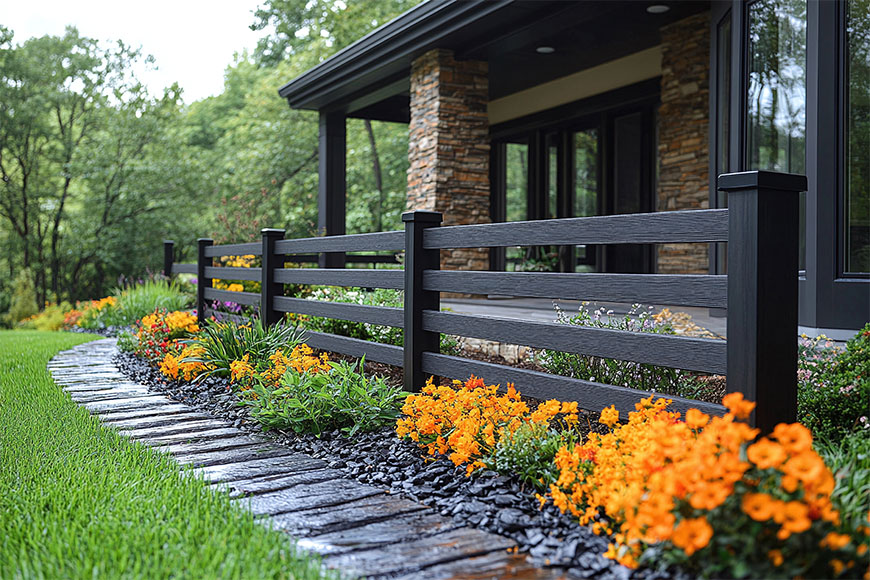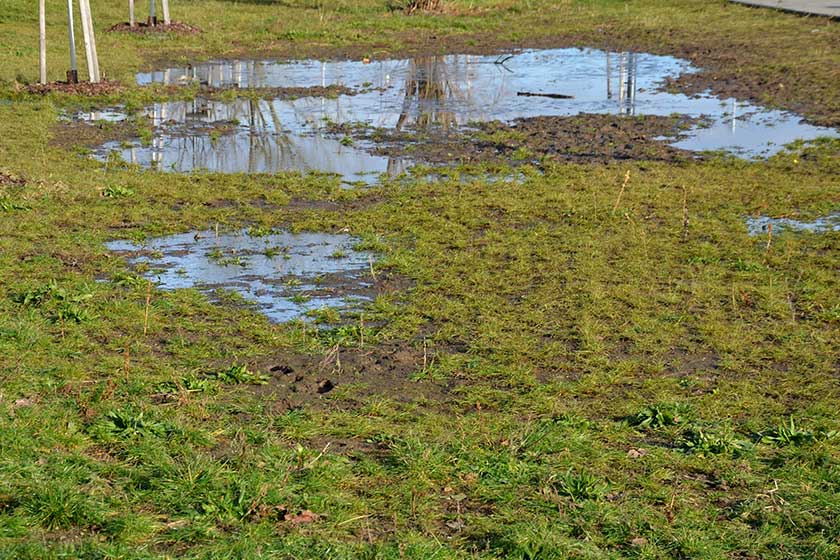Planting trees is one of the most rewarding ways to enhance your property. Not only do they offer natural beauty and shade, but they also improve air quality, boost your home’s curb appeal, and create a space that fosters relaxation and connection with nature.
For homeowners seeking to make a lasting impact on their landscape, here are transformative ideas that combine functionality, aesthetic appeal, and environmental benefits.
Frame Your Home with Statement Trees
Framing your home with carefully chosen trees creates a striking visual effect. Large trees such as oaks or maples positioned symmetrically at the front of your property draw attention to architectural features while providing balance and grandeur. For smaller homes, ornamental options like dogwoods or redbuds can create the same stunning frame without overwhelming the space.
When choosing trees for framing, consider their growth patterns. Trees that grow tall and narrow, like cypress or birch, can help accentuate vertical lines. Meanwhile, spreading canopies like magnolias create a welcoming, shaded entryway.
Design Outdoor Living Spaces with Shade Trees
Turn your backyard into a comfortable retreat by incorporating shade trees into your design. Trees like live oaks, elms, or sycamores are excellent choices for creating a cooling canopy over seating or dining areas. The shade not only enhances outdoor comfort but also reduces energy costs by cooling nearby indoor spaces.
Combine these trees with complementary landscaping elements such as stone patios or cozy fire pits to create a cohesive outdoor living environment. Over time, these trees will become central to your family’s gatherings and relaxation.
Add Seasonal Color with Flowering Trees
Flowering trees bring dynamic color and charm to any yard. With blossoms that change through the seasons, these trees give year-round interest. Cherry blossoms, crabapples, and dogwoods are popular choices that bring vibrant spring blooms. Meanwhile, magnolias and crepe myrtles add beauty during the warmer months.
Planting flowering trees near windows or patios allows you to enjoy their beauty from inside your home. Additionally, their blossoms attract pollinators and enrich your local ecosystem.
Create Privacy with Evergreen Screens
For homeowners seeking solitude, evergreen trees are an excellent natural solution. Fast-growing species like arborvitae, Leyland cypress, or holly give year-round privacy. They can create a serene escape from neighbors or busy streets.
Strategically place these trees along property lines or near patios to establish a green barrier that feels organic and welcoming. Their dense foliage also helps reduce noise. For that reason, they are a versatile option for homes in bustling neighborhoods.
Incorporate Edible Landscaping
Why not plant trees that serve dual purposes? Fruit and nut trees like apple, pear, cherry, and pecan offer stunning aesthetics while providing fresh produce. This idea combines beauty and functionality, allowing homeowners to enjoy the fruits of their labor seasonally.
Place these trees in sunny areas where they can thrive and produce abundant harvests. Pairing them with complementary plants like berry bushes or herbs can create a fully edible landscape that is as pleasing to the eye as it is to the palate.
Line Pathways and Driveways with Tree Avenues
Tree-lined pathways evoke a sense of timeless elegance. Planting rows of trees such as maples, oaks, or birches along driveways or garden paths creates a structured and inviting approach to your home.
To maintain symmetry and balance, select species with uniform growth patterns and space them evenly. The result will be a grand, picturesque avenue that enhances the curb appeal of your property.
Use Dwarf Trees for Small Spaces
Not all landscapes have room for sprawling oaks or towering pines. For smaller yards, dwarf trees like Japanese maples, dwarf citrus, or redbuds are ideal. These compact species give the same aesthetic and functional benefits without overwhelming limited spaces.
Plant dwarf trees in containers for added mobility or near patios and garden beds to create visual interest. Their manageable size makes them a favorite for urban gardens and smaller suburban properties.
Plant Trees for Wildlife Habitat
Trees play an important role in supporting local wildlife. With species like oaks, willows, or hickories, you can create a haven for birds, butterflies, and small mammals. Fruit-bearing trees also attract wildlife while adding beauty to your yard.
Consider integrating birdhouses or feeders into your tree planting design to further encourage visits from local fauna. Watching wildlife thrive in your landscape adds an extra layer of joy to your outdoor space.
Highlight Trees with Underplanting
The area beneath trees often goes overlooked but can be a canvas for creativity. Add shade-tolerant plants like hostas, ferns, or colorful groundcovers to enhance the visual appeal of tree bases.
Underplanting creates a cohesive look and helps retain moisture in the soil, benefiting the tree’s health. Choose plants that complement the tree’s foliage and create a layered effect for added depth.
Focus on Native Trees for Sustainability
Planting native species not only supports the environment but also makes sure of better tree health. Trees like American sycamores, red maples, or eastern redbuds are well-suited to local climates and require less maintenance than exotic varieties.
Native trees also give vital habitats for indigenous wildlife. They will help preserve your area’s ecosystem. Research which species thrive in your region to make the most of your tree-planting efforts.
Experiment with Espalier Designs
Espalier trees are a unique and space-saving option for homeowners looking to add artistic flair. These trees are trained to grow flat against walls or fences. They are perfect for small spaces or urban landscapes.
Commonly used for fruit trees like apple or pear, espaliers can also feature ornamental species for decorative purposes. This approach blends functionality and artistry, transforming plain walls into living masterpieces.
Integrate Trees into Water Features
Pairing trees with water elements such as ponds, fountains, or streams creates a tranquil environment. Weeping willows, river birches, or bald cypresses thrive near water and enhance the serene aesthetic of these features.
Positioning trees to overhang water adds shade and visual depth. This creates a peaceful retreat that feels like a private oasis.
Design Seasonal Interest with Foliage Variety
Trees with varied foliage colors can make your landscape vibrant year-round. Consider planting a mix of evergreens, deciduous trees with stunning autumn colors, and flowering varieties for spring and summer.
Sugar maples, ginkgos, and aspens are excellent for fall color, while blue spruces and white pines offer striking winter interest. A well-planned mix makes sure your yard remains visually captivating in every season.
Create Sculptural Focal Points
Certain trees stand out for their unique shapes, bark, or growth patterns. Trees like paperbark maples, weeping cherries, or twisted pines serve as living sculptures. They add a dynamic focal point to your yard.
Plant these trees in prominent locations where their distinctive features can be fully appreciated. Pair them with subtle landscaping elements to avoid overshadowing their natural beauty.
Transforming your home with thoughtful tree-planting ideas can elevate your outdoor space into something truly special. From creating shaded retreats to showcasing vibrant seasonal colors, trees offer countless benefits for homeowners.
Covenant Landscapes specializes in helping homeowners bring these ideas to life. If you’re looking for expert design, professional installation, or tree removal services, we’re here to support you every step of the way. Let us help you create a landscape that enhances your home’s beauty, gives lasting value, and nurtures your connection with nature.
Contact Covenant Landscapes today to learn more about our lawn care services and start your transformative tree-planting journey!



